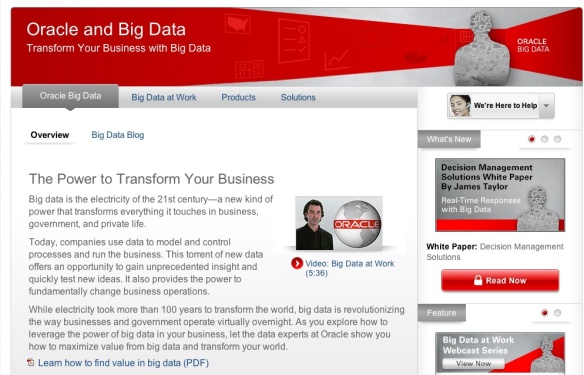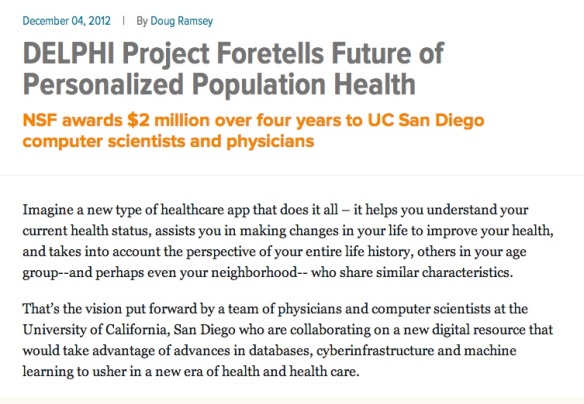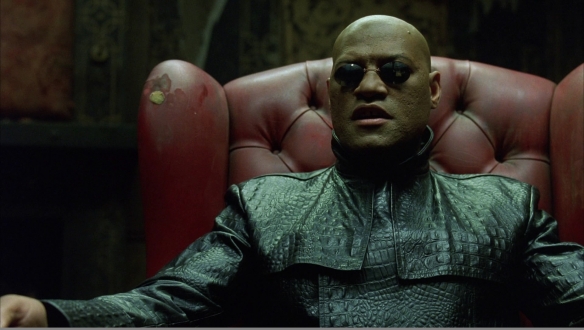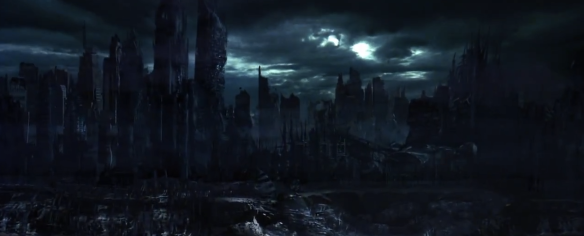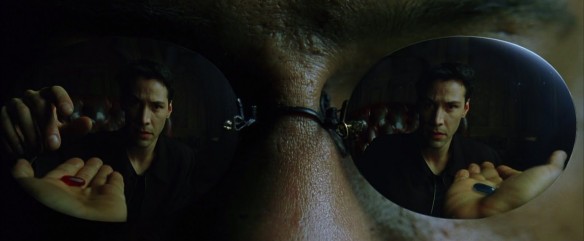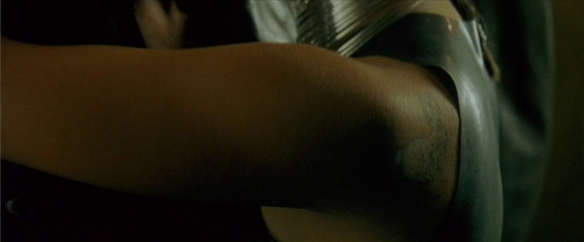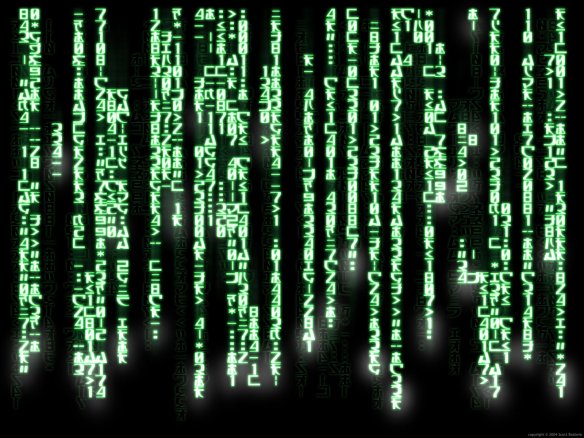NOTE: What follows is a slightly adapted version of a panel presentation at this year’s Rhetoric Society of America conference in San Antonio, Texas. The panel, it should be noted, was a collaboration of sorts, a funky assemblage of approaches to “Big Data” highlighting theoretical orientations and “methods” for both territorializing the phenomena and de-territorializing what was found to be a “metaphysics of Big Data.” The rhetorical apotheosis of “Big D” marked for session organizer and scholar Miles Coleman (U. of Washington) a topos of Big Data figured as an enticing heavenly strata of Truth and celestial cosmos of code. Thus the title of the panel: “Big Data Metaphysics in the Borderland of Quantitative and Qualitative Research.” Gratitude to Miles for the chance to enter the myst(h)ical matrices of Big Data’s rhetorical ether.
But from . . . his thousand sons/Old Father Sleep arouses Morpheus/Skillful at simulating human form;/there wasn’t any other of his children/as capable of copying the ways/men walked, or looked, or sounded . . . – Ovid, Metamorphoses
You’re here because you know something. What you know you can’t explain, but you feel it. You’ve felt it your entire life, that there’s something wrong with the world. You don’t know what it is, but it’s there, like a splinter in your mind, driving you mad. It is this feeling that has brought you to me. Do you know what I’m talking about? – Morpheus, The Matrix
There is not much about Morpheus in myth. It is said that Morpheus takes human form in dreams, a shape-shifting daimon who couriers messages of gods, mostly the craftings of Iris. Son of Hypnos (“Sleep”), the most silent of all gods who gives calm to weary arms, Morpheus is rumored to excel at taking human form, “skillful at simulating human form: there wasn’t any other . . . as capable of copying the ways men walked, or looked, or sounded when they spok; he did their clothing too, and knew what words they would most often use.”[1] Displaying phantom features, Morpheus (and his brothers – Phobetor and Phantasos) cheat shapes and roam in the sweet domains of “rapid eye movement,” REM realms where dreams are most vivid. In REM, it is suggested that the activity of the brain’s neurons is quite similar to that during waking hours. For this reason, the soporific halls of REM-sleep stage may be called “paradoxical sleep,” a topos between fantasy and reality to which I follow Morpheus to get a sense of Big Data’s mythic resonances, or the resonances of myth that drive Big Data’s dreams, and give texture – mythic and material – that inform attitudes and assumptions of Big Data’s transcendence. My fellow panelist (Miles Coleman) argues that the topos of Big Data is indeed metaphysical, which has, according to Miles, morphed the accumulation of digital bits into a celestial being, a deity of data imaged as idol of algorithmic theodicy registering ethereal awe and the need for contemporary visionaries, sybils who might offer (for a price) direct divination and categorical certainty, drawn from the cosmos of celestial code. As Miles notes, even in a stochastic age, the possibility of clarity from an apotheosis of data has its draw. The dream of clear communicative enlightenment, of pure contact with knowledge, might indeed be the promise of contemporary seers, proprietors who purport that their analyses can provide “unprecedented insight” that can “maximize value.”
Oracle, Inc. To assume oracle status, claim oracularity, to adopt oracular rhetoric and speak oracularly. This is tricky business, but seemingly good business nonetheless, especially perhaps when it comes to working as an analyst under the auspices of a Delphic project, or Project Delphi, which again promises the leveraging of data for improving health – monetary and otherwise – and foretelling of futures (stock probably included).
After all, Delphi is the place, or rather the shrine of Apollo, at which The Pythia, the oracle and inspired seer of the heavens, wrought futures. Thus, the business of oracularity is also very much mythic, not in the sense that it is false, or “bad” ideology, but in the sense that it is a host of “tentative organizations of energy and impulse . . . living shapes, organic,” as defined by William Doty.[2] Understood as such, the apotheosis (rendering a god) of Big Data and its cosmos are protean. Even as Big Data’s dreamy mythscapes of heavenly strata might be assumed to be metaphysics 2.0, amplifying its mythic textures highlights how the attitudes of Big Data are generated and formed, as well as how they might be reformed, morphed and capable of metamorphoses that gesture towards Big Data as a “chaosmos,” to cite Felix Guattari (more on this term shortly).[3]
Admittedly, mythically rendering Big Data’s cosmos into an extra-terrestrial firmament of chaosmosis, to site Guattari once more, risks re-inscribing the need for expert seers to decipher and analyze celestial codes for clarity, services offered by Oracle, Inc. However, during the downgrade (upgrade?) into myth, the metaphysics 2.0 of Big Data is ushered down, fell into the to more sordid spheres of Vico’s corporeal imagination – where the material senses of metaphysics secretes and spills over into relying on the body to create a cosmos.[4] Put another way, myth gives sense to seemingly insentient things, during which energies and attitudes are formed/morphed.
Metaphysical/theological poets, according to Vico, were the first priests for divining the gods, crafted in practices of corporeal imaging, to which suited agents professing translation are indebted to. Both imagine, irrationally, “the causes of the things they first felt and wondered at to be gods.”[5] Metaphysical poetics are thus deemed necessary, giving mythic body to Big Data, inspired by the presences of oracles. The move to myth, again, does not dismiss the topos of dreams, per se. Rather, the “methodological” move (to use the language of the panel thematic) stays in the virtual topos to morph Big Data and its sybilistic rhetoric into something more ecological, para-human, or even a chasmotic mingling of human and virtual that renders translation rhetorically crafted, less clear, neutrality of judgment less possible/desirable, and certainly more contingent, and possible more “tragic” than oracular rhetoric of maximizing value marks. Oracular rhetoric requires belief, a leap of faith, and perhaps even sacrifices. Into the matrices of myth then to plug into an oracular rhetoric or oracularity that accounts for and amplifies the ways in which Big Data is always already a protean cosmos bound to amorphous, labyrinthine, disjointed babble of entranced sybils. The version of Oracularity I propose provides little in the way of a direct link to gods. Quite the contrary. The oracular rhetoric I have in sight and sound evades transparency, expects riddles requiring humility, and presumes guesswork, promising little maximization of anything, except perhaps for a tragic revelation, regardless of the angelic algorithmic agents and guardians called upon to protect Oracle, Inc.’s image.
With Morpheus then, “though the dewy dark on noiseless wings,” we morph the “dream” of accumulative knowing, morphing the clean cosmos of Big Data into a chaosmos, a de-territorialized mythscape.[6] With Morpheus then, though a daimon of virtual dreams shaped to a more contemporary encoded dreamscape of data, one more fashionable, cloaked accordingly and in accordance with a setting in which the virtual, ecological, and metaphysical are riddled with porous borders, confused and crossed.
Morpheus, after all, is most adept and cunning at taking up the gait and speech, the style of men. It is sensible that he would adopt a more familiar form for our dream while still holding to ancient orientations of “the fashioner or moulder, because he shaped or formed the dreams which appeared to the sleeper.”[7] Let us sink into sweet drowsiness and with Morpheus then, reconfigure dreams of Big Data.
Part I: Towards the Red Pill and a Chaosmic Plunge, Or, Following Morpheus
To be a metaphysical poet; my role has been deemed so, accepted graciously, with zeal, and with two guides that lead me into a non-method for approaching Big-Data – Morpheus, a mythic god capable of taking human form in dreams and Felix Guattari, theoretical god who touts a “dance of chaos” in “personal recomposition that is . . . delirious” as if in a dream, as necessary if we are to touch the fantasms of data and get a feel for a somamachinc syntax that inspires aesthetic projects that arrange contact with algorithmic angels, contact that affectively “contaminates” (Guattari’s term) transcendent interfacing and spoils the kind of divine awe of celestial over-coding, the apotheosis of enlightenment and power of clear sight (and perfect customers) that Oracle Inc. claims, even if mystified in the mythic title “Oracle.”[8]
To be sure, I have only a fuzzy idea of “Big Data,” which, after attempting this piece, was only made more nebulous and unsettled. Especially after following Guattari and Morpheus, transformed in the virtual reality of The Matrix (cinematic trilogy and encoded cosmos that forms virtual existence). Both dream-like (reading Guattari is nothing if not this) messengers help configure Big Data’s mythic resonances that amplify its divine status, escorting me to mythic realms/films that texture/cover Big Data as (1) a matter of belief supported by machinic faith, prayer, and ritual sacrifices of metis, phronesis, prudence, and other contingent forms of rhetorical judgment, (2) always already vulnerable to exiled mythic evocations that enliven glitches, rogue programs, and all manner of what Guattari calls “mutant creationism” (as in The Matrix) that pass through permeable borders of fractal cosmologies – porous borders between algorithmic and angelic, architectural and oracular, which (3) crafts BD as metamorphic.[9] Following Guattari’s formulation of an aesthetic paradigm for morphing “existential territories” into what he describes as “chasmosis” (de-territorializing metaphysical realms into a virtual ecology of interaction), my orientation to BD does not delete Architect for Oracle, and vice versa. Entering the realms of mythic methods, the urge might be to find the “desert of the Real,” as Morpheus describes it, to strip bare and separate into bits, reinscribing the myth of mythlessness.
But that would not be very poetic, nor would it provide for reenchantment with a “composition of enunciative assemblages” (Guattari’s phrase) that might blur any gods-eye view, muddle any “pure horrifying precision” (as Morpheus recalls the operations of The Matrix) that visions of BD might presume, and intensify hard data and algorithmic components as far less neutral, enlightening, and receptive to clarity than Oracle Inc. might lead on.[10]
Rather, I take Guattari’s “chaosmic plunge,” in which, according to Guattari, “the flesh of sensation and the material of the sublime are inextricably woven” in a machinic orality, speech made of both the virtual and ecological that has the potential to render cosmos into ch-a-osmos – a polyvocal (dare I say pagan, following Lyotard) metaphysical plane.[11] With the plunge, poetically, rhizomatically magnifying BD’s mythic imaginary and morphing it with The Matrix as inspiration performs, citing Doty, a “seeding” of “mythopoetic reassemblings” that form suprarational attachments with BD, attachments that temper claims to perfection and oracular beings as conduits of information given by gods.[12] Myth is a tentative organization of energies, argues Doty, protean shapes that operate to make sense and sensed. If taken as fluid, it can be morphed for alternative senses and attachments, provided by filmic layers that give BD “touch.”
For the moment, The Matrix trilogy provides that filmic layer, imaging a realm between mechanical, biological, and metaphysical, a mythic topos from which to draw from for machinic orality of BD. The Trilogy is a chimerical assemblage of myth and machine, metaphysics and algorithmics, codes and clerics, a rich ecology of data-driven myth and mythic driven data that animates my image of Oracular vision, crafted with conceit and complex metaphorical meandering (as is decorous for metaphysical poets).
From here, we swallow the RED PILL
and follow the fleshy white rabbit
to a (apropos Guattari) chaotic dance club, just as Neo had to do to gain entrance into The Matrix. As Morpheus explains, we may feel “a bit like Alice, tumbling down the rabbit hole,” a statement that magnifies how the rhizomatics of myth function. Charting and rendering a mythic imaginary as chaosmos requires such falls, as myth runs associatively, pest-ering linear lines of over-coding.[13]
Quoting Morpheus, “this will feel a little weird,” as it is meant to. Toggling between virtual, biological, and metaphysical. Where to start then, after taking the pill? As mentioned, this plunge, I had no conception of what BD was. As such, in order to make sense of data, it seemed fitting to find an oracle, even perhaps if they might over-code their capacities for clarity, control, transformation, and maximization of value, a search that only accents a mythic reconfiguration of BD’s inspiring fantasms, those that secretes sense into code.
Part II: Mythic Fantasms of Big Data, Or, “Seeing” the Oracle(s)
The Pythia, the Oracle of Delphi, housed in the Temple of Apollo and inspired by the god of light and arrows, far darter and musical healer that he is, deemed closest Olympian ally to humanity. Slayer of the terrible Python, now buried and decomposing, fuming, vapors of “rot” spooling from earthy chasms, seeping into inducement from which spills forth gibberish, entangled enigmas to unspool and spool again, prophecies of tragic futures yet realized, yet known – poor Oedipus and his doomed decoding. The Furies won’t leave him alone. Nothing but riddles, even more riddled in analysis, er, prophecy. All that Socrates heard was that he is wisest, which was bent into knowing nothing. Only more questions. And the beginning of his philosophy. At least he is not selling clarity. Pythia, derived from the pythein, “to rot.” Plutarch says that Pythian pneuma, the breath of rot, smelled like the sweetest perfume.
Machinic Oracle: Book I
Ancient myths of sybils are beginnings for envisioning how a mythic approach to BD might offer up some critical resources for muddling assumptions of capacities for clean and clear judgment based in accumulation. But the machinic moment and worship of code plunges me into The Matrix as a well-suited mythic topos for a blended realm, both heavenly and technocratic. Especially compelling is the Oracular presence in the Matrix, rogue program that she is, an updated mythic ghost in the machine who moves around and highlights the many glitches that haunt the Matrix’s architect and his constant attempts to perfect the system. And there are a number of exile programs who no longer function as they should, who have lost “purpose” according to their coding, to upset downloads and pester the healthy body of the Matrix. It is the mythics who seem to be most troublesome for guardian agents, especially the ever cool and well-suited and all business, Smith.
Persephone, Trinity, the obsolete Merovingian who provides safe havens for other obsolete programs who don’t opt for deletion, and, of course, The Oracle, rogue program that she is.
“Not quite what you were expecting” states The Oracle at the start of our first meeting with her, who openly admits that her way is of twisting the mind and to “bake your noodle,” especially on the fine line between predicting and suggesting the future, both of which The Oracle performs, writing the code of judgment as exile, in a temple that exudes its own entrancing pneuma: fresh baked cookies. Like Delphi, here there are only more riddles. “Know thyself” is one. It hangs over the door, “from balls to bone” is the material ways The Oracle claims that might happen. The Oracle is only guide emphasizes Morpheus, “try not to think about it in terms of right or wrong,” only as twisting what you want to hear. Can you trust an Oracle then? After all, every meeting = bad news. She is sorry for that, but that is her oracular – derived from “orare,” to speak – orality, a code and protocol to bring imbalance into The Matrix. She admits as much. This is The Oracle’s true purpose, to confuse equations and Architectural dreams of perfection by acquisition with enigmas. Why does The Oracle help humans in the Matrix? The only way to get to a future is together – machine and human. Guattari would approve with this chaosmosis. Though can one ever trust an oracle? The “together” is another riddle, perhaps a warning: “Everything that has a beginning has an end. I see the end coming, I see the darkness spreading. I see death.” Oracular orality – riddled, contingent, protean, machinic, possibly tragic, certainly not a technical operation of Oracle Inc. and any Delphic Project that guarantees bright futures.
Part III: Lowering the Metaphysical Gaze, Or, Bringing Big Data “Down”
Going into the imaginary of The Matrix for machinic oracles that riddle with human judgment presents us with a mythic topos at which machine, material, and metaphysical intersect, crossings that inflect a chaosmos of big data that is impure in a mythic formation. The Matrix’s virtual dreamscape provides a “low” theory, to recall Judith Halberstam’s formulation, theory undisciplined with knowledge from below that, when grafted with the loftiness of Guattari, does indeed resist mastery, value the nonsensical, and animate access (eccentric access?) that strays from technocratic regimes of seeing and narrow expertise.[14] Ambulatory and perhaps less than rigorous, the base layers of popular culture, according to Halberstam, can refuse dogmatic faiths and untrain our looks for envisioning and revisioning Oracular or prophetic claims by Big Data purveyors. Aim low then. If “Big Data” is rendered or proclaimed to be high, “out of reach” in the strata of sheer belief and out of the realms of human understanding, go small and aim low.
My evocation to Morpheus and oracles attempts this lowering visions of Big Data to the messy rhizomatics of myth in which rhetorico-poetic morphing might alter the levels of BD, the forms it takes, the way it is encoded and programmed as a part of a machinic ecology, alive and requiring (for better and worse) human judgment, the thing agent Smith despises, almost as much as our stench: “Never send a human to do a machine’s job” is the maxim. The topos of The Matrix, again, amplifies attending to BD in terms of its mythic resonances, turning its metaphysical nature into a machinic ecology, an architecture of myth and machine, to be encoded and recoded, morphed from a cosmos to a chaosmos, where glitches, an unassimilated babel of “mutant creations,” including rogue oracles threaten to befoul heavenly constellations of equations and programmed lawful algorithms with riddles and gibberish, oracular rhetoric more fitting for calling on uncertain sybils of Big Data’s metaphysical, yet protean domains.
Preview *** (Coming Soon) Mythic Matrices Part IV: Parasitic Glitches and the Machinic Arts of Guattari’s Mutant Creationism
Notes:
[1] Ovid, Metamorphoses, trans. Charles Martin (New York: W.W. Norton & Company, 2004), Book XI 908
[2] Doty, William, “Myth,” in The Encyclopedia of Rhetoric and Composition: Communication from Ancient Times to the Information Age, ed. Theresa Enos (New York: Garland publishing, Inc., 1996), 451.
[3] Guattari, Felix, Chaosmosis: an ethico-aesthetic paradigm, trans. Paul Bians and Julian Pefanis (Bloomington, IN: Indiana University Press, 1995).
[4] Vico, Giambattista, The New Science, trans. Thomas Goddard Bergin & Max Harold Fisch (New York: Anchor Books, 1961). It should be noted that Vico’s poetic metaphysics, concerns for metaphor as metamorphosis, and renderings of a “cosmography” graft nicely into Guattari’s theories of an chaosmic ethico-aesthetic paradigm, even though Vico’s humanistic tendencies temper the move to a machinic assemblages.
[5] Vico 74.
[6] Ovid. Metamorphoses.
[7] Ovid, Metamorphoses.
[8] Guattari 118.
[9] Guattari 116.
[10] Guattari 116. In using the phrase “god’s-eye-view,” I am thinking here of James C. Scott’s study, specifically, how modernist regimes of vision assumes legibility, rationality, and standardization from above, from “stately” postures that sacrifice practical metis, which disrupts with mutation, mutuality, plasticity, diversity, and collectivity. See, Scott, James C., Seeing Like a State: How Certain Schemes to Improve the Human Condition Have Failed (New haven: Yale University Press, 1999).
[11] Guattari 96. How can I speak of a protean and polyvocal cosmography without a pagan nod to Lyotard and his pagus, the wild in which shapeshifters and glitchy gods of all kinds exist and deterritorialize monolithic tales of ownership. See, Lyotard, Jean-Francois, “Lessons in Paganism,” in The Lyotard Reader, ed. Andrew Benjamin (Cambridge, MA: Basil Blackwell, Inc., 1989).
[12] Doty, 450.
[13] Whenever “pest” arrives, I think para Michel Serres’ fable/theory of parasitic noise of interruption that disturbs the quiet meal, the parasite as inventor, one who plays with fire in place of location, who has wind but not content. See, Serres, Michel, The Parasite, trans. Lawrence R. Schehr (Minneapolis: University of Minnesota Press, 2007).
[14] Halberstan, Judith, The Queer Art of Failure (Durham: Duke University Press, 2011). I also reference here Nicholas Mirzoeff’s ambulatory exegesis on how the film Pan’s Labyrinth puts on display how fantasy and “folk wisdom” might offer grounds for alternative visions and rights to look at efficiently owned and operated regimes of discipline, especially those that trample local and rumored knowledge deemed “merely” tales. See, Mirzoeff, Nicholas, The Right to Look: A Counterhistory of Visuality (Durham: Duke University Press, 2011).


